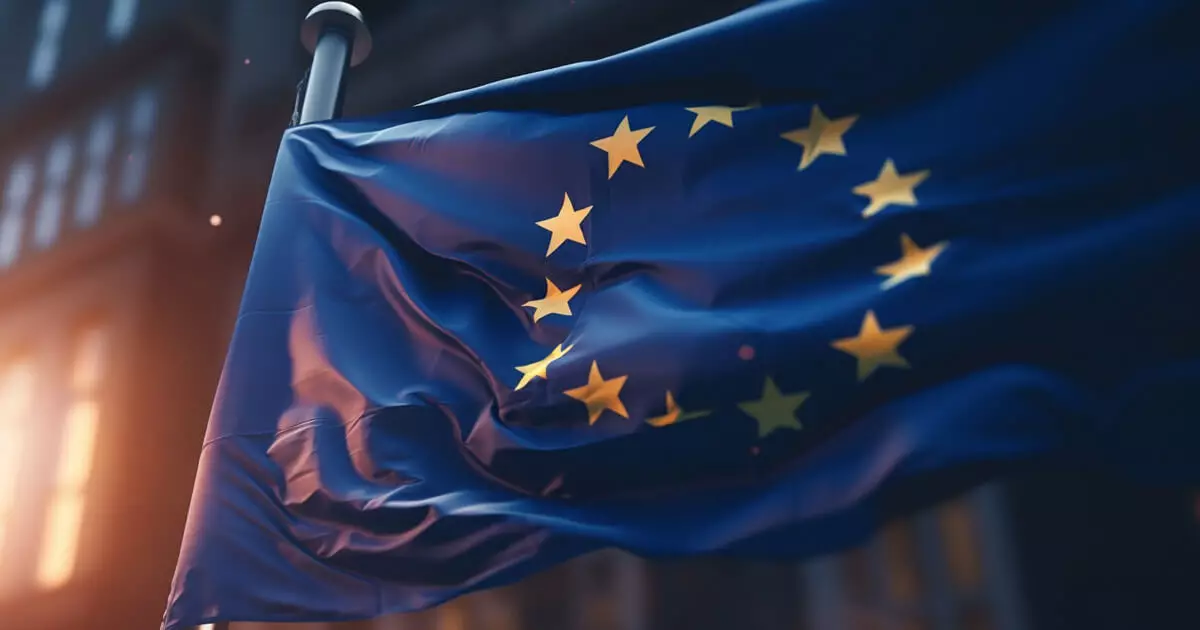In the rapidly evolving world of cryptocurrency, regulatory frameworks can either serve as a bridge to legitimacy or a hindrance to innovation. With the recent implementation of the Markets in Crypto-Assets (MiCA) regulation in the European Union in January, prominent exchanges like Kraken and Crypto.com are taking decisive steps to adapt. Both companies are in the throes of developing their own stablecoins—an effort not only to comply with the new rules but to secure their foothold in the European market amidst increasing oversight.
MiCA represents a comprehensive approach to regulating digital financial assets within the EU. Rather than a simple set of guidelines, this regulation introduces rigid compliance measures specifically tailored for stablecoin issuers. Under MiCA, all stablecoins are classified as “e-money tokens” (EMTs) or “asset-referenced tokens” (ARTs), necessitating stringent authorization from relevant EU financial authorities. This framework emphasizes several core requirements: issuers must maintain transparent reserve structures, ensure stable backing with liquid assets, and adhere to consumer protection protocols.
The effect of these stringent rules is already being felt across the market. Non-compliant stablecoins—most notably, major players like Tether’s USDT and the PYUSD from PayPal—are experiencing backlash, as they find themselves pushed off various exchanges in Europe due to their inability to conform to the MiCA requirements. The European Securities and Markets Authority (ESMA) has set a tight deadline for exchanges to delist such unauthorized assets, heightening the urgency for issuers to either adjust to the regulations or exit the European landscape altogether.
In light of this shifting regulatory environment, Kraken and Crypto.com are proactively developing their proprietary stablecoins, circumventing the uncertainties that come with third-party stablecoin providers. This strategy not only ensures compliance with MiCA but also gives these exchanges enhanced control over their liquidity and transaction processes. By establishing their own stablecoins, they can secure their operational stability and mitigate risks associated with regulatory fluctuations.
Kraken is allegedly gearing up to release a stablecoin backed by the US dollar via its Irish subsidiary. This move will not only fortify its presence in Europe but also align with the MiCA mandate requiring local authorization. Similarly, though less information is available about Crypto.com’s stablecoin—particularly its underlying fiat mechanism—the company’s acquisition of a MiCA license from Malta’s financial regulator marks a significant stride towards operational compliance across the European Economic Area (EEA).
The ramifications of MiCA are poised to extend far beyond European borders, influencing global stablecoin regulation patterns. Other regions, including the United States and various Asian markets, are closely monitoring how these rules shape the landscape of digital asset management. As MiCA aims to outline crucial aspects of stablecoin issuance—including the requirement for full backing in high-quality liquid assets and the necessity for clear disclosure regarding redemption mechanisms—these regulations may ultimately serve as a roadmap for countries seeking to adapt their own stablecoin structures.
Moreover, the regulation’s introduction of transaction caps for substantial stablecoins (those transacting over €200 million daily) demonstrates a proactive approach to managing potential systemic risks. It serves as a cautionary move designed to protect the broader financial ecosystem from potential disruptions caused by unstable digital assets. Yet, this only adds pressure for many existing stablecoin issuers, triggering concerns about their ability to meet compliance deadlines.
While some companies, such as Circle, are making strides to align their operations with MiCA, others like Tether remain behind in terms of regulatory approval. This disparity emphasizes a crucial moment of transformation for the industry, where exchanges and issuers alike must navigate this transition to avoid potential pitfalls.
Future Perspectives for Major Exchanges
As the landscape shifts, exchanges are reevaluating their strategies to ensure alignment with MiCA regulations. KuCoin’s recent application for a MiCA license in Austria hints at a broader, industry-wide pivot towards embracing regulatory compliance.
Kraken and Crypto.com’s decision to develop in-house stablecoins exemplifies a strategic adaptation to a rapidly evolving regulatory environment. As the industry grapples with the implications of MiCA, these developments symbolize both a challenge and an opportunity for rethinking the role of stablecoins in the global financial ecosystem. With upcoming deadlines and compliance necessities looming, the actions of these exchanges could very well define the future of stablecoin usage within Europe and beyond.
















Leave a Reply